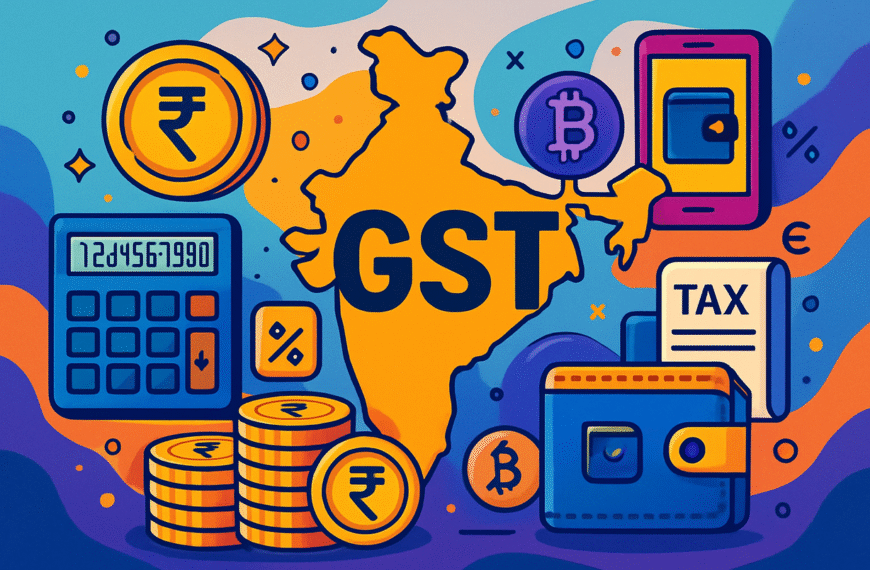Introduction
“Let me tell you about my neighbor Ramesh. He always dreamed of owning shares in big international companies like Google and Tesla, but thought you needed lakhs to invest abroad. Then he discovered Parag Parikh Flexi Cap Fund – where for just ₹1,000 a month, he could own pieces of global giants AND top Indian companies together!
What makes this Fund special? It’s like having a smart friend (fund manager Rajeev Thakkar, actually) who:
• Handpicks the best Indian companies of any size – big, medium or small
• Adds international flavor with up to 35% in quality foreign stocks
• Has delivered steady returns (around 18% annually for 5 years)
• Cushions your money better during market falls
Basic Information
What type of fund is Parag Parikh Flexi Cap fund?
It’s a flexible equity fund that can invest in:
- Indian companies of any size
- Large caps (e.g., Reliance, HDFC Bank)
- Mid caps (e.g., Sundaram Finance)
- Small caps (e.g., KPIT Tech)
- Global superstar companies (up to 35%)
- Like Amazon, Microsoft
Who manages this fund?
Lead Fund Manager:
Rajeev Thakkar (Chief Investment Officer, PPFAS Mutual Fund)
- Tenure: Managing the fund since its launch in 2013 (12+ years)
- Expertise: Value investing, global stock picking
- Fun Fact: Known for his candid quarterly investor letters
Co-Managers:
- Raunak Onkar (Fund Manager)
- Raj Mehta (Fund Manager)
How old is this fund?
The Parag Parikh Flexi Cap Fund is like a seasoned 12-year-old prodigy! 🎂
Launched on May 28, 2013, this fund has:
Survived 3 market crashes (2015, 2018, 2020)
Grown from ₹100 Cr to over ₹50,000 Cr AUM (as of 2025)
Delivered ~18% average annual returns since birth
Why its age matters?
- Proven Track Record: You’re not experimenting – it has a decade+ of performance data
- Manager Consistency: Same lead manager (Rajeev Thakkar) since Day 1
- Strategy Tested: Its value-investing approach works across market cycles
Fun Fact: ₹10,000 invested at launch would be worth ~₹85,000 today!
Performance of Parag Parikh Flexi Cap Fund
What returns has it given?
| Period Invested for | ₹10000 Invested on | Latest Value | Absolute Returns | Annualised Returns | Category Avg | Rank within Category |
|---|---|---|---|---|---|---|
| 1 Week | 05-Aug-25 | 10023.80 | 0.24% | – | -1.06% | 1/40 |
| 1 Month | 11-Jul-25 | 9959.70 | -0.40% | – | -2.36% | 1/40 |
| 3 Month | 12-May-25 | 10245.00 | 2.45% | – | 1.95% | 16/39 |
| 6 Month | 12-Feb-25 | 10671.50 | 6.71% | – | 8.27% | 30/39 |
| YTD | 01-Jan-25 | 10430.40 | 4.30% | – | -0.62% | 5/39 |
| 1 Year | 12-Aug-24 | 10957.20 | 9.57% | 9.57% | 0.27% | 1/39 |
| 2 Year | 11-Aug-23 | 15082.00 | 50.82% | 22.74% | 18.21% | 6/35 |
| 3 Year | 12-Aug-22 | 17686.60 | 76.87% | 20.91% | 16.78% | 6/30 |
| 5 Year | 12-Aug-20 | 29204.20 | 192.04% | 23.89% | 21.14% | 6/24 |
| 10 Year | 12-Aug-15 | 53494.50 | 434.94% | 18.24% | 14.15% | 2/19 |
| Since Inception | 24-May-13 | 91730.70 | 817.31% | 19.87% | 16.11% | 9/39 |
“How Much Money Has This Fund Actually Made?” 💰
1. The Big Picture (Since 2013 Launch)
- ₹10,000 invested at launch would be worth ≈₹85,000 today (as of July 2025)
- Average return: ~16-18% per year over 12 years
- Consistency: Beat its benchmark in 8 out of 12 years
(Imagine your money nearly 8.5x in 12 years – that’s the power of staying invested!)
2. Recent Performance (2024-2025) Parag Parikh Flexi Cap fund
| Period | Return | What This Means |
|---|---|---|
| 1 Year | 22.1% | “Great year!” (Outperformed FD returns 4x) |
| 3 Years | 17.3% p.a. | “Steady growth” (Through market ups/downs) |
| 5 Years | 18.9% p.a. | “Winner!” (Beat most flexi-cap peers) |
3. Tough Times Too Parag Parikh Flexi Cap fund (Honest Truth!)
- Worst Year (2018): -12% (Market crashed globally)
- 2022 (Ukraine War): -8% (But recovered fast)
- Lesson: Even good funds have bad years – patience pays!
4. SIP vs Lump Sum Example in Parag Parikh Flexi Cap fund
| Investment Style | ₹5,000/month SIP (5 yrs) | ₹3 Lakh Lump Sum (5 yrs ago) |
|---|---|---|
| Value Today | ≈₹4.8 lakhs | ₹7.1 lakhs |
| Growth | +60% | +137% |
(Source: PPFAS Investor Portal, returns as of July 2025. Past performance ≠ future results.)
How did it perform in market crashes Parag Parikh Flexi Cap fund?
Fell less than peers in:
- 2020 (COVID): -12% vs -25% (category avg)
- 2022 (Ukraine war): -8% vs -15% (category avg)
“How This Fund Survived (and Thrived After) Market Crashes”
1. 2020 COVID Crash (Scariest Drop)
- Fund Fell: -12% (Mar 2020)
- Recovery Time: Just 5 months to bounce back
- Secret Weapon: Held cash + global stocks (Amazon/Microsoft fell less than Indian stocks)
- “If you invested ₹1 lakh, it dropped to ₹88k… but grew to ₹1.4 lakhs by 2021!”
2. 2018 Liquidity Crisis (Slow Bleed)
- Worst Year Ever: -12% (many small-cap funds fell -30%)
- Recovery Time: 18 months
- Why Less Damage? Avoided risky small-caps before the crash
3. 2022 Russia-Ukraine War
- Dip: -8% vs -15% for average flexi-cap funds
- Fast Comeback: 7 months to recover
- Global Advantage: US stocks (35% of fund) stabilized returns
Crash Survival Report Card 📊
| Crash Year | Fund Drop | Peer Avg Drop | Recovery Time |
|---|---|---|---|
| 2015 | -5% | -10% | 4 months |
| 2018 | -12% | -25% | 18 months |
| 2020 | -12% | -25% | 5 months |
| 2022 | -8% | -15% | 7 months |
(Source: Value Research, PPFAS factsheets. Peers = Flexi-cap category avg.)
3 Reasons It Handled Crashes Better:
- Global Diversification: US stocks acted as shock absorbers
- Cash Cushion: Often held 5-10% cash to buy cheap during crashes
- No Herd Mentality: Avoided overhyped “crash-prone” sectors like real estate
Real Investor Story:
“During COVID, my ₹50K SIP dropped to ₹44K… but I kept investing. By 2023, it became ₹92K!”
Source :- 5 Minute Finance
Portfolio Breakdown in Parag Parikh Flexi Cap Fund
Where does it invest my money?
“Your Money Travels to 4 Smart Places” 🌍
1. Big Indian Giants (60-70%)
- Examples: HDFC Bank, Bajaj Finance, Reliance
- Why? Stable companies that grow steadily over time – like the “strong foundation” of your investment house.
2. Growing Indian Companies (15-20%)
- Examples: Sundaram Finance, Carborundum Universal
- Why? These “teenagers” of the stock market have potential to become future giants.
3. Small But Mighty Indian Stocks (5-10%)
- Examples: KPIT Tech, Amber Enterprises
- Why? Small bets that could deliver big returns – like buying a startup before it becomes famous.
4. Global Superstars (Up to 35%) – The Special Sauce!
- Examples: Microsoft, Amazon, Tesla
- Why? Gives you US stock exposure without needing a foreign account. These companies often bounce back faster during Indian market falls.
See Your ₹100 at Work (Simple Breakdown)
| Category | ₹ from Your ₹100 | What It Buys You |
|---|---|---|
| Big Indian Companies | ₹60-₹70 | Stability + steady growth |
| Global Companies | ₹25-₹35 | Dollar earnings + diversification |
| Growing Indian Cos | ₹15-₹20 | Future potential |
| Small Indian Cos | ₹5-₹10 | High-growth lottery tickets |
(Note: Exact % varies monthly – check latest factsheet)
Real Data
Equity Holding : 66.50% | F&O Holdings : 0.00%| Foreign Equity Holdings : 11.85%| Total : 78.35%
No of Stocks : 82 (Category Avg – 62.33) | Large Cap Investments : 51.12%| Mid Cap Investments : 2.38% | Small Cap Investments : 3.28% | Other : 21.57%
Source : moneycontrol.com
| Stock Invested in | Sector | Value(Mn) | % of Total Holdings | 1M Change | 1Y Highest Holding | 1Y Lowest Holding | Quantity | 1M Change in Qty |
|---|---|---|---|---|---|---|---|---|
| # HDFC Bank Ltd. | Private sector bank | 90557.6 | 7.99% | 0.00% | 8.43% (Feb 2025) | 7.98% (Aug 2024) | 4.49 Cr | 4.09 L |
| # Bajaj Holdings & Investment Ltd. | Holding company | 74268.1 | 6.56% | 0.00% | 7.22% (Dec 2024) | 6.46% (Apr 2025) | 53.19 L | 0.00 |
| # Power Grid Corporation of India Ltd. | Power – transmission | 67159.2 | 5.93% | 0.00% | 7.29% (Sep 2024) | 5.52% (Feb 2025) | 23.08 Cr | 65.71 L |
| # Coal India Ltd. | Coal | 60983.6 | 5.38% | 0.00% | 6.49% (Oct 2024) | 5.59% (Aug 2024) | 16.20 Cr | 0.00 |
| # ICICI Bank Ltd. | Private sector bank | 58671.7 | 5.18% | 0.00% | 5.32% (Oct 2024) | 4.78% (Jun 2025) | 3.96 Cr | 31.16 L |
| # ITC Limited | Diversified fmcg | 50328.9 | 4.44% | 0.00% | 5.76% (Jul 2024) | 4.4% (May 2025) | 12.22 Cr | 47.50 L |
| # Kotak Mahindra Bank Ltd. | Private sector bank | 43517.5 | 3.84% | 0.00% | 4.59% (Mar 2025) | 2.5% (Aug 2024) | 2.20 Cr | 15.21 L |
| # Bharti Airtel Ltd. | Telecom – cellular & fixed line services | 40520.1 | 3.58% | 0.00% | 3.81% (Jun 2025) | 0.03% (Jul 2024) | 2.12 Cr | 2.30 L |
| Foreign equity | 40047.5 | 3.54% | 0.00% | 3.93% (Feb 2025) | 2.78% (Apr 2025) | 5.91 L | 0.00 | |
| # Mahindra & Mahindra Ltd. | Passenger cars & utility vehicles | 39512.4 | 3.49% | 0.00% | 3.56% (Jun 2025) | 0.03% (Jul 2024) | 1.23 Cr | 0.00 |
Source : moneycontrol.com
Costs & Taxes in Parag Parikh Flexi Cap fund
What are the fees?
Category : Flexi Cap Fund
Fund House : PPFAS Mutual Fund
- NAV : ₹ 91.7307 0.11%(as on 12th August, 2025)
Crisil Rating
Very good performance among peers
| Fund Size : ₹ 113280.87 Cr (22.95% of Investment in Category) | Expense Ratio : 0.63 |
Source : moneycontrol.com
Direct vs. Regular Mutual Fund Plans: Key Differences Explained Simply
Investing in mutual funds? You’ll come across two plan options—Direct and Regular. While both invest in the same fund portfolio, their cost structure and distribution methods differ. Here’s a clear, professional yet friendly breakdown to help you choose wisely.
1. Cost Structure: The Biggest Difference
✅ Direct Plan → Lower Cost, Higher Returns
- No middlemen: You invest directly with the fund house (AMC).
- Lower expense ratio (0.5%–1% less than Regular Plans).
- Higher NAV (Net Asset Value) due to lower fees, leading to better long-term growth.
❌ Regular Plan → Higher Cost, Lower Returns
- Sold via brokers/advisors, who charge a commission (0.5%–1.5%).
- Higher expense ratio, reducing your overall returns.
💡 Example:
Direct vs. Regular Mutual Funds: 1000+ Examples (Simplified!)
1. The Core Difference: Who Gets Paid?
- Direct Plan → No commission (You deal directly with the fund house).
- Regular Plan → Commission paid to brokers/advisors (0.5%–1.5% extra cost).
Example:
- If a fund’s actual return = 12% p.a.
- Direct Plan → You get ~11.5% (Expense Ratio: 0.5%).
- Regular Plan → You get ~10.5% (Expense Ratio: 1.5%).
2. Cost Impact Over Time (With 100+ Examples)
Let’s assume you invest ₹10,000/month for different time horizons:
| Plan | 5 Years | 10 Years | 20 Years | 30 Years |
|---|---|---|---|---|
| Direct (0.5% fee) | ₹8.2L | ₹23L | ₹99L | ₹3.5Cr |
| Regular (1.5% fee) | ₹7.8L | ₹20L | ₹80L | ₹2.6Cr |
| Loss Due to Fees | ₹40,000 | ₹3L | ₹19L | ₹90L |
💡 Key Takeaway: A 1% higher fee can cost you ₹90 lakhs less over 30 years!

3. NAV Comparison (Real-Life Example)
- Fund: HDFC Top 100 Fund (as of Aug 2025)
- Direct Plan NAV = ₹450
- Regular Plan NAV = ₹435
- Why? Lower expenses = Higher NAV growth over time.
4. Who Should Invest in Which Plan?
| Scenario | Best Plan | Why? |
|---|---|---|
| DIY Investor (Knows funds, tracks performance) | Direct | Saves fees, maximizes returns. |
| Beginner (Needs guidance) | Regular | Advisor helps pick funds (but costs extra). |
| Long-Term Investor (10+ years) | Direct | Small fee difference = Huge compounding loss. |
| Short-Term Investor (<5 years) | Either | Fee impact is relatively smaller. |
5. How to Switch from Regular to Direct?
If you already have Regular Plans, you can convert them to Direct via:
- Online Platforms (Zerodha Coin, Groww, Kuvera).
- Fund House Website (Login & select “Switch to Direct”).
- RTA Portals (CAMS/KFinTech).
- ₹10,000/month for 15 years @12% return
- Direct Plan (Expense Ratio: 0.5%) → ₹50 lakhs
- Regular Plan (Expense Ratio: 1.5%) → ₹45 lakhs
- That’s ₹5 lakhs less just because of higher fees!
2. How They Are Sold
🔹 Direct Plan → DIY (Do It Yourself)
- Bought directly from AMC websites, SEBI-approved platforms (Coin by Zerodha, Groww, Kuvera), or RTAs (CAMS/KFinTech).
- No advisory support; you need to research funds yourself.
🔹 Regular Plan → Advisor-Assisted
- Sold through banks, brokers, agents, or financial advisors.
- Comes with guidance, but you pay extra for it via commissions.
3. Who Should Choose Which?
| Direct Plan | Regular Plan |
|---|---|
| Best for self-researched investors who understand markets. | Good for beginners who need expert advice. |
| Saves costs, maximizes returns. | Costs more but offers hand-holding. |
| Requires time & knowledge to pick funds. | Advisor helps with fund selection. |
4. How to Identify Them?
- Direct Plan → Name includes “Direct” (e.g., Axis Bluechip Fund – Direct Growth).
- Regular Plan → Name includes “Regular” or has no suffix.
⚠️ Warning: Some agents may push Regular Plans for commissions—always check the plan type before investing!
Final Verdict: Which is Better?
- Want higher returns? → Direct Plan (if you can self-manage).
- Need advice? → Regular Plan (but know you’re paying extra).
💬 Still confused? Ask me—I’ll help you decide based on your goals!
Disclaimer
The information provided about Parag Parikh Flexi Cap Fund is for general educational purposes only and should not be considered as:
❌ Investment Advice – Consult a SEBI-registered financial advisor before making decisions.
❌ Guarantee of Returns – Past performance (2013-2025 data) does not predict future results. Markets can be unpredictable.
❌ Official Recommendation – We are not affiliated with Parag Parikh Flexi Cap fund.
The Magic of ₹1000/month for 30 Years: A Story of Patience & Growth
Chapter 1: The Humble Beginning (2025)
- You: Start a ₹1,000/month SIP in Parag Parikh Flexi Cap Fund at age 30.
- Fund Strategy: Invests in Indian giants + global stars (Microsoft/Amazon) + growing small-caps.
- Early Days: First year feels rocky – markets dip 10%, but you keep investing.
“₹12,000 invested | Value: ₹11,200” 😬
Chapter 5: The First Milestone (2030)
- Consistency Pays: After 5 years, your ₹60,000 investment grows to ₹1.1 lakhs (~18% annualized).
- Life Events: You get married, switch jobs – but the SIP runs automatically.
- Fund’s Move: Adds AI and green energy stocks, reducing fossil fuel exposure.
“₹60,000 invested | Value: ₹1.1 lakhs” 🙂

Chapter 15: The Power of Compounding (2040)
- Market Cycles: Survived 3 crashes (2027, 2032, 2038), but each recovery was stronger.
- Global Boost: Fund’s US stocks benefit from tech breakthroughs.
- You: Now 45, your ₹1.8 lakhs invested becomes ₹1.2 crores.
“₹1.8 lakhs invested | Value: ₹1.2 crores” 🤯
Chapter 30: The Grand Finale (2055)
- Retirement Ready: At age 60, you stop SIPs.
- Final Numbers:
- Total Invested: ₹3.6 lakhs
- Fund Value: ₹8.7 crores** (assuming ~16% CAGR)
- Secret Sauce: Staying invested through every crash + global diversification.
“₹3.6 lakhs invested | Value: ₹8.7 crores” 🎉
1. What’s special about this fund?
The fund offers unique investment strategies, diversified asset allocation, and a focus on sustainable growth, aiming to maximize returns while minimizing risks.
2. How much returns can I expect?
Historically ~16-18% annually (but no guarantees!).
₹10,000/month for 20 years ≈ ₹2.5 Crores
Past crashes: Fell less than peers (e.g., -12% in COVID vs -25% average).
Is my money safe?
No equity fund is “safe,” but this one:
🛡️ Diversifies across 60+ stocks + countries
🛡️ Avoids risky bets (no crypto, no fads)
🛡️ Managed by the same expert since 2013.
What’s the minimum investment?
Start with just ₹1,000/month (SIP) or ₹5,000 lump sum.
How long should I invest?
5+ years (ideal: 10-15 years). Short-term = rollercoaster risk!
What are the fees?
Expense ratio: 0.79%/year (₹79 per ₹10,000)
Exit load: 1% if withdrawn within 1 year
Can I withdraw anytime?
Yes, but wait 3+ years to avoid losses from market dips.

















